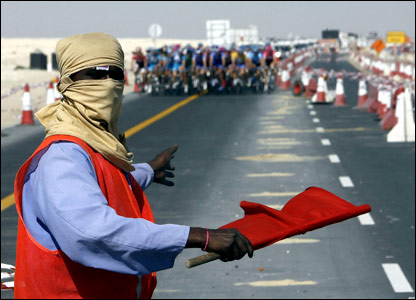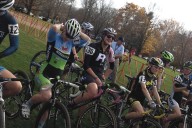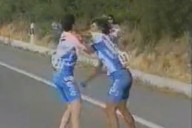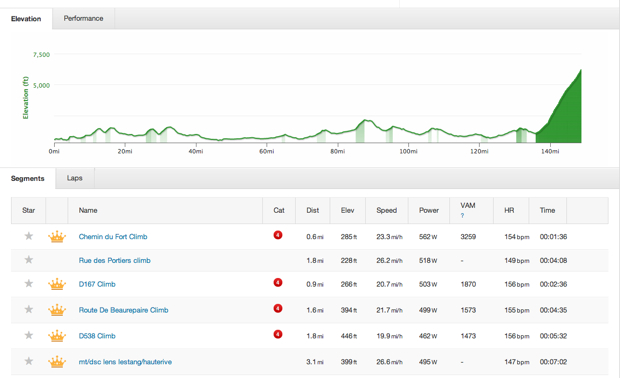Welcome to Qatar, the country of wind, luxury and luxury under construction. All this luxury comes from the 15 billion barrels of oil and 800 trillion cubic feet of gas (which is just short of a gazillion barrels of gas) they’ve got stored somewhere underground.
The first time I did the Tour of Qatar, back in 2007, the capital city Doha was merely a dusty construction site. Nowadays the city is of a decent size with some very impressive buildings and a beautiful skyline. We don’t see many Qatari on the side of the road here, but at the finish of the last stage of the Tour of Qatar, on the boulevard in Doha, the crowds visibly grow by the year, which is probably linked to the influx of Europeans and Anglo-Saxons moving here for good jobs that go along with the ever-growing economy of the country.
Outside the city of Doha not much has changed over the years, it’s still barren and sandy with nothing else as far as the eye can see. The roads are improving little by little but there are still plenty of potholes, sand dunes, and cateyes to dodge while trying to ride on an inch of road around the country due to the echelons caused by strong winds and the desire of cyclists to hurt each other as much as they can at the first opportunity of the year.
Contrary to what you might think if you saw the footage of the 2012 Tour of Qatar, there was hardly any wind in this year’s edition. The amount of wind we had in this Tour wouldn’t have been enough in any other race, but it’s different in Qatar. Firstly, because there is no shelter whatsoever – just desert – and no hills, trees, or houses, which means there is always a chance for an attempted echelon to be successful. Secondly, and maybe even more importantly, there are always echelons in Qatar because that’s what happens in the Tour of Qatar. Every rider knows it and wants it to happen, so every slight change in riding direction means a flat-out sprint to the corner followed by full-gas swapping off by anyone lucky (or skilled) enough to make it through the corner in the front, just to see if it’s enough to break the peloton in the crosswind.
In most races an echelon gets started by a single team or a cooperation between several teams in an attempt to surprise the rest of the peloton, but there is no surprising here; everyone tries to roll through as soon as possible, virtually regardless of teammates, because it’s a lot easier to go around in the echelon than it is riding on the side of the road hanging on for dear life. The knowledge that at any particular point in time echelons could be formed makes the peloton extremely nervous and highly strung. Add to that the aforementioned potholes, sand dunes, cateyes, and the fact that most riders haven’t been in a peloton for months and it’s a recipe for crashes.
A few of the days I finished the race with a headache from concentrating so much trying to anticipate corners and trying to be in the front going around the corner, all the while trying to avoid the obstacles (and crashed riders) on the road when I’ve got just a few centimetres of space between me and the rider on either side of me at the best of times.
I realise I make this sound like the worst race on the planet, but honestly it’s the best possible preparation for the classics and a perfect chance to find out exactly how good the form is. Not only are the temperatures close to perfect and the sun always shining, there also aren’t too many races where almost all riders are riding large parts of the stages at close to maximum effort.
In a flat race without any wind it’s just too easy to follow the bunch – it doesn’t even feel like a training ride – but also hardly anyone rides a race with lots of climbing that long in the red zone even if it would only be for the downhills where you can’t go that hard. Apart from that, I’m also pretty good at this kind of racing. Riding in a peloton and being at the front whenever you want to be is a skill that not many riders possess. I’m lucky enough to have that skill, which will come in handy again when we are going into a bunch sprint or battling to start the ‘Cipressa’ in Milan-San Remo or the ‘Oude Kwaremont’ in Flanders at the front of the bunch. Very often you’ll see sprinters and classics riders at the front of the Tour of Qatar just for this specific reason; they can be in the front when they know they have to be.
For me personally this Tour of Qatar was pretty successful. First of all because I finished all the stages with my skin still intact, which is no small achievement, but also because of the way I was feeling. I wasn’t expecting stage wins or top 5 in the general classification, as I know I need some racing before I’ll hit the form required to get really good results but I was happy with the progression I made during the race.
I ended up a fairly meaningless 33rd on GC but I can feel my form coming along nicely. Just for that extra bit of training I rode back to the hotel on the 5th stage to get a total daily distance of 215km. I also made the last stage a little harder by riding on the front of the bunch for quite a while to catch the 7-man break, not in the least because I felt like I needed some high intensity riding to improve my form, but it would also help my teammates get a good result. Tom Veelers, traditionally very good at this time of the year, finished in a great 5th place on GC and we had the chance to try out the lead-out train a few times resulting in a 5th place for John Degenkolb and a 4th place for Roger Kluge. All in all a good start of the 2012 season, now on to Oman for my second race of the year.















No Comments